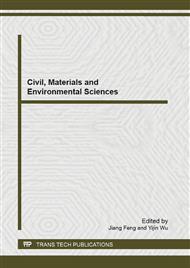p.80
p.85
p.92
p.98
p.104
p.109
p.116
p.122
p.127
Relationship between International Roughness Index and Power Spectral Density of Asphalt Pavements in China
Abstract:
In this paper, pavement roughness is assumed as random stationary variable and used as the exciting force of theoretical analyses of the quarter car model of International Roughness Index (IRI). From the frequency response function of the quarter car, the response function of the displacement difference between sprung and unsprung mass is obtained based on random process theory. Then the relationship between IRI and power spectral density (PSD) is established from statement characteristic of the response function. Finally, the longitudinal road profiles of typical asphalt roads in China are used to validate the proposed model.
Info:
Periodical:
Pages:
104-108
Citation:
Online since:
August 2013
Authors:
Price:
Сopyright:
© 2013 Trans Tech Publications Ltd. All Rights Reserved
Share:
Citation:


